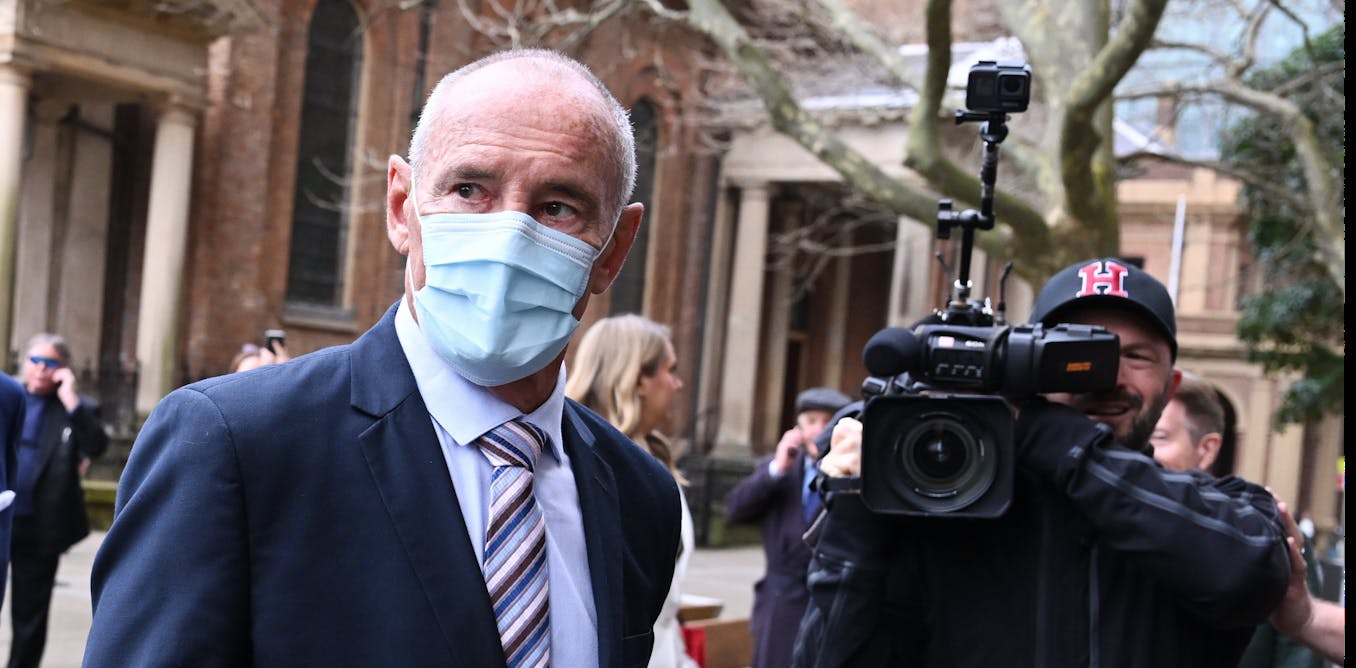
- Select a language for the TTS:
- UK English Female
- UK English Male
- US English Female
- US English Male
- Australian Female
- Australian Male
- Language selected: (auto detect) - EN
Play all audios:
In December 2018, former professional rugby league player and high school teacher Chris Dawson, then aged 70, was arrested and charged with murdering his wife Lynette almost forty years
previously. Today, in the Supreme Court of New South Wales, Justice Ian Harrison declared: “I am satisfied beyond reasonable doubt that the only rational inference (is that) Lynette Dawson
died on or about 8 January 1982 as a result of a conscious or voluntary act committed by Christopher Dawson”. Thus he found Dawson guilty of her murder. Dawson has now had his bail revoked
and has been remanded in custody pending sentence. How did we get here? BEYOND REASONABLE DOUBT Lynette Dawson had gone missing from her home at Bayview in Sydney’s northern beaches between
January 8 and 9, 1982. Soon thereafter Chris Dawson reported the disappearance to police. He thereafter moved his teenage lover, referred to in the trial as “JC”, into his home. They later
married. After an acrimonious divorce, JC went to police and said she believed her former husband had murdered Lynette. A police investigation began, and JC was to become a key witness
against him. Justice Harrison presided over the trial without the benefit of a jury because of a perception that the publicity in the lead up to Dawson being charged was so prejudicial that
a jury could not have been able to exercise their fact-finding without bias. The prosecution case was that Dawson murdered Lynette so he could have an “unfettered” relationship with JC whom
he had met when she was a year 11 student. Dawson’s defence counsel, Pauline David, argued, to the contrary, that there was no weapon, and nor was there any forensic or scientific evidence
of any murder. She questioned how the accused could have killed his wife and carried her body out to his car when the car was parked outside. Defence arguments are always designed to raise
doubts. In this case they failed. Justice Harrison said he was persuaded beyond reasonable doubt that the prosecution had made out their case. Dawson has always maintained he was not
involved with Lynette’s disappearance. Her body has never been found. THE TEACHER’S PET What makes this case so interesting is that a journalist with The Australian, Hedley Thomas, had
engaged in his own fact-finding exercise. He was scathing of the police investigation. He published a podcast, The Teacher’s Pet, which was broadcast between May and December 2018. It
reached an estimated audience of 60 million listeners in which Thomas presented evidence that he maintained pointed clearly to Dawson’s guilt. The podcast was taken offline in 2019 to avoid
prejudicing the trial and influencing potential prosecution witnesses. Notwithstanding, Dawson’s defence team attempted, unsuccessfully as it turned out, to get a permanent “stay of
proceedings” (meaning the prosecution is halted in its tracks) on the basis that the podcast was so prejudicial that their client would not be able to get a fair trial. Indeed, Thomas had
been criticised for his extrajudicial enthusiasm, but Justice Elizabeth Fullerton, who heard the application to stay proceedings, was unmoved by the defence team’s pleading. There are two
other extraordinary features of this case. The first is that unedited conversations that Thomas had recorded were used as evidence in the trial, notwithstanding that the persons who were
being interviewed would not have received the usual formal warnings concerning the use to which those interviews may later have been put. Second, the trial judge heard that former NSW Police
Commissioner Mick Fuller had directed senior investigating police to join Thomas for lunch at a Surry Hills restaurant before Dawson was charged. While such a conversation is not damning of
a prosecution case, it can be frowned upon for police to engage in familial interviews with persons who have had no direct evidence of the matters at hand and who have formed their own
conclusions concerning guilt and innocence. It’s not uncommon for a journalist to go into bat for a person whom he or she thinks has been wrongly convicted. One of the more celebrated cases
involved the conviction of Edward Splatt for the murder in Adelaide of Rosa Simper in 1977. The fearless case mounted by Stewart Cockburn in publishing a series of articles in May 1981 led
to a Royal Commission and, finally, Splatt’s exoneration after he had spent more than six years behind bars. But it’s highly unusual for a journalist to pursue someone he thinks has been
involved in foul play, and to do so by publishing a popular podcast that presents a particular view of the facts in dispute. As he and his editors knew, the podcast would stray perilously
close to being so prejudicial as to prevent the trial ever proceeding. That being said, the trial verdict is one that will give Hedley Thomas enormous gratification, and is a clear victory
for dogged investigative journalism. But watch this space – Dawson’s lawyers have flagged an appeal.








